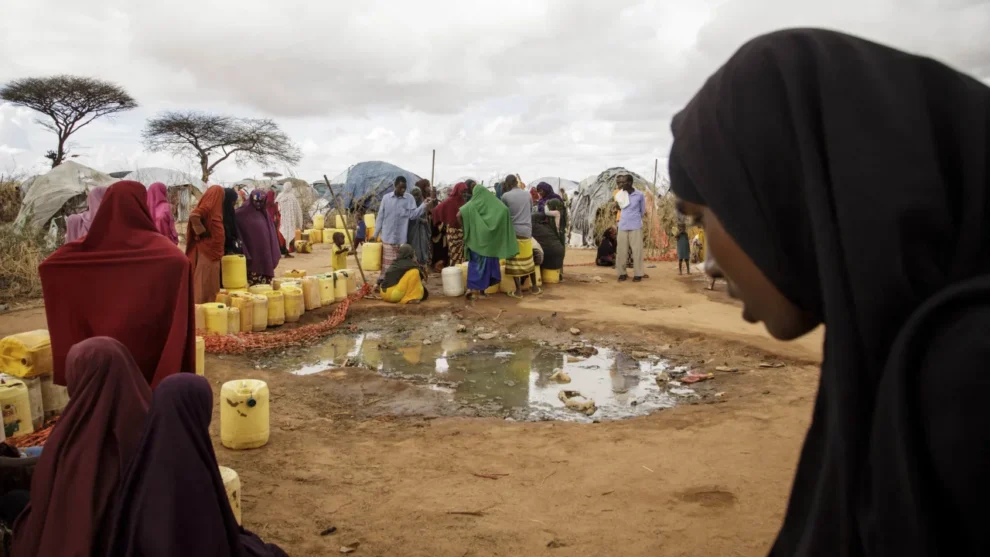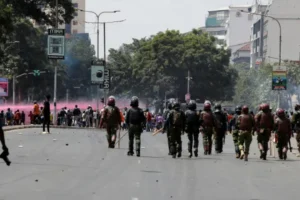The unrelenting drought that has devastated the Horn of Africa and left more than 20 million people facing acute food insecurity would not have been possible without climate change, a new analysis has found.
Since October 2020, this part of East Africa, one of the world’s most impoverished regions, has been gripped by its worst drought in 40 years as an unprecedented five consecutive rainy seasons have failed.
The drought has brought catastrophic impacts to large areas of Kenya, Somalia and Ethiopia: Tens of thousands have died, crops have shriveled, livestock have starved and chronic hunger and water insecurity are widespread and growing.
In a world without human-caused climate change, this devastating drought would not have happened.
That’s the conclusion of a rapid attribution study released on Thursday by the World Weather Attribution initiative. The organization is made up of a team of international scientists who, in the immediate aftermath of extreme weather events, analyze data and climate models to establish what role climate change played.
In the Horn of Africa, they found that planet-heating pollution caused by burning fossil fuels has made the region’s ongoing agricultural drought 100 times more likely – and that’s a conservative estimate, they said.
Higher temperatures have significantly increased the amount of water evaporating from plants and soils, according to the study, causing crop losses, livestock death and water shortages.
The planet’s average temperature is now around 1.2 degrees Celsius above the pre-industrial levels of the late 1800s. Without that warming, the region would not have experienced this severe agricultural drought, the report found.
The scientists also looked at whether climate change was to blame for the lack of rain, but concluded there was no overall impact.
The report found that while climate change makes low rainfall twice as likely during the region’s “long rains” season, which runs from March to May, it actually makes the “short rains,” between October and December, wetter.
The reason this wetter trend has been absent in the Horn of Africa over the last few years is because of the influence of La Niña, a natural climate phenomenon that brings dryer conditions to the region during the short rains period.

The Muuri camp in Baidoa, Somalia, in February 2022. People are flocking here from rural areas of southern Somalia, which has been hit hard by drought.Yasuyoshi Chiba/AFP/Getty Images
Human-caused global heating is making droughts across the world longer and more extreme. The blistering drought that affected the Northern Hemisphere last summer, including large parts of the US, Europe and China, was made 20 times more likely by the climate crisis, according to an October analysis from the the World Weather Attribution group.
Scientists say droughts will only become more severe if the world continues to burn fossil fuels.
Regions that are already vulnerable face the worst impacts. The climate change-fueled disaster in the Horn of Africa has brought devastation to a region already suffering from a slew of problems, including global price hikes following Russia’s invasion of Ukraine and deadly internal conflicts.
Much of the population are farmers that rely on rainfall for crops and livestock. They have been plunged even further into poverty as the rains failed. At least 8 million farm animals are estimated to have died during the drought.
“This has actually forced people to migrate to other regions in search of either water or pasture for their crops, or also just food for their families,” said Phoebe Wafubwa, an adviser at the International Federation of Red Cross Red Crescent in Kenya.

A man stands among animal carcasses at the village of Antalale, Ethiopia, in January 13, 2023.Eduardo Soteras/AFP/Getty Images
Around 1.7 million people in Ethiopia and Somalia have had to leave their homes because of the impacts of the drought, according to the report, and hunger levels are sky-high. More than 20 million people in the Horn of Africa have been pushed into crisis levels of food insecurity, or worse, according to the United Nations High Commissioner for Refugees.
In Somalia, which has been teetering on the edge of famine, more than 43,000 people are estimated to have been killed by the drought, half of whom were children under five years old.
“Almost half of country’s population is affected, over 3 million people are displaced,” Mamunur Rahman Malik, the Somalia representative for the World Health Organization, told CNN. “The country continues to pay the price of global warming and climate change,” he added.

People wait for water at a camp in Baidoa, Somalia, on February 13, 2022.Yasuyoshi Chiba/AFP/Getty Images
“The findings of this study show that frequent multi-year droughts compounded with heat extremes, in the main rainy season, will severely impact food security and human health in the Horn of Africa as the climate continues to warm,” Joyce Kimutai, principal meteorologist and climate scientist at the Kenya Meteorological Department, said in a statement.
The region is seeing some relief during the current rainy season, although it has brought flash flooding to parts of Kenya, Somalia and Ethiopia.
“The expectation is that the drought is coming to a close,” Chris Funk, director of the Climate Hazards Center at UC Santa Barbara, told CNN.
But it will be a very long road to recovery. The current rains are “not substantial enough” to see a significant improvement to food security, Kimutai explained on a call with reporters. And the region can expect more extreme dry conditions in the future.
As the world continues to warm, “we expect to see the combined effect of low precipitation with (high) temperatures causing really exceptional droughts in this part of the world,” she said.
Source: CNN











